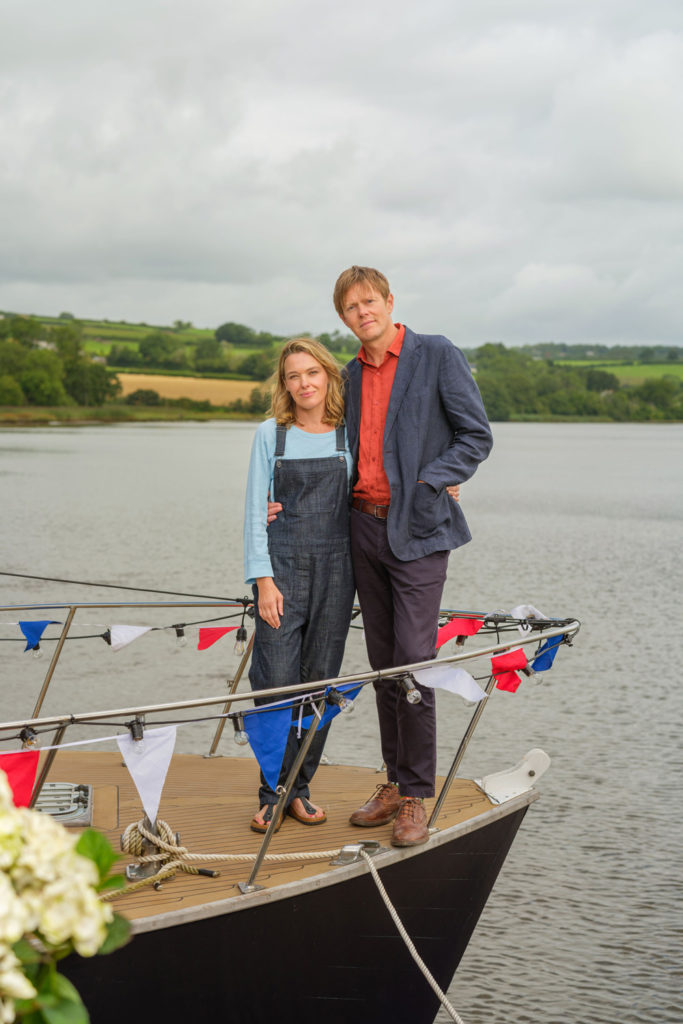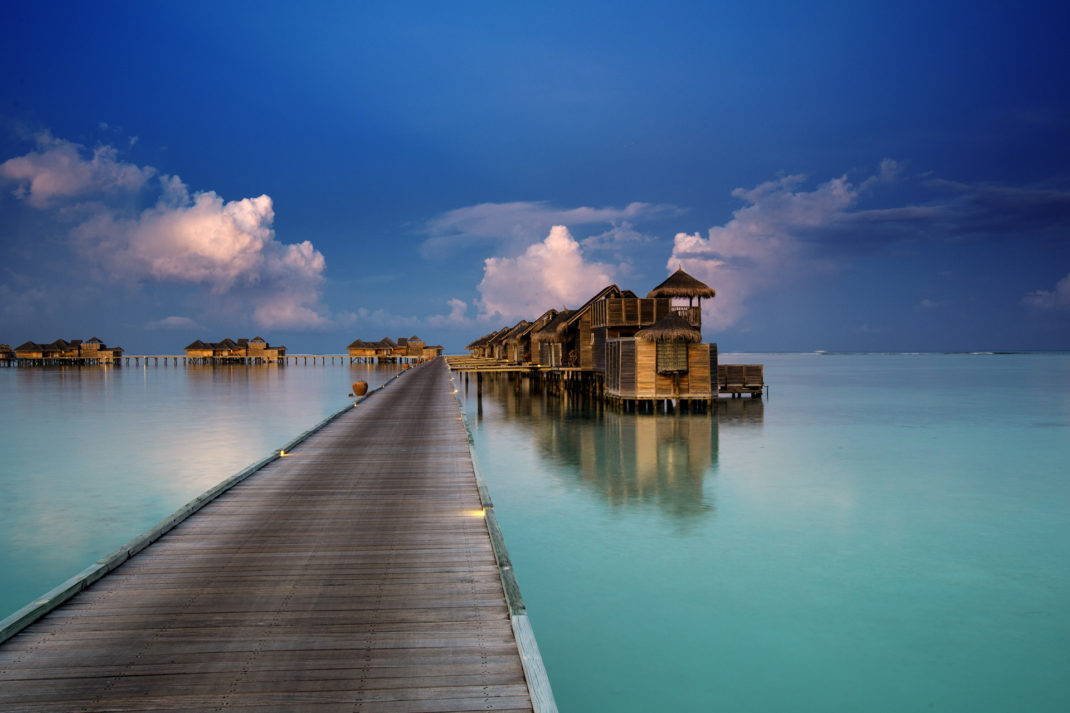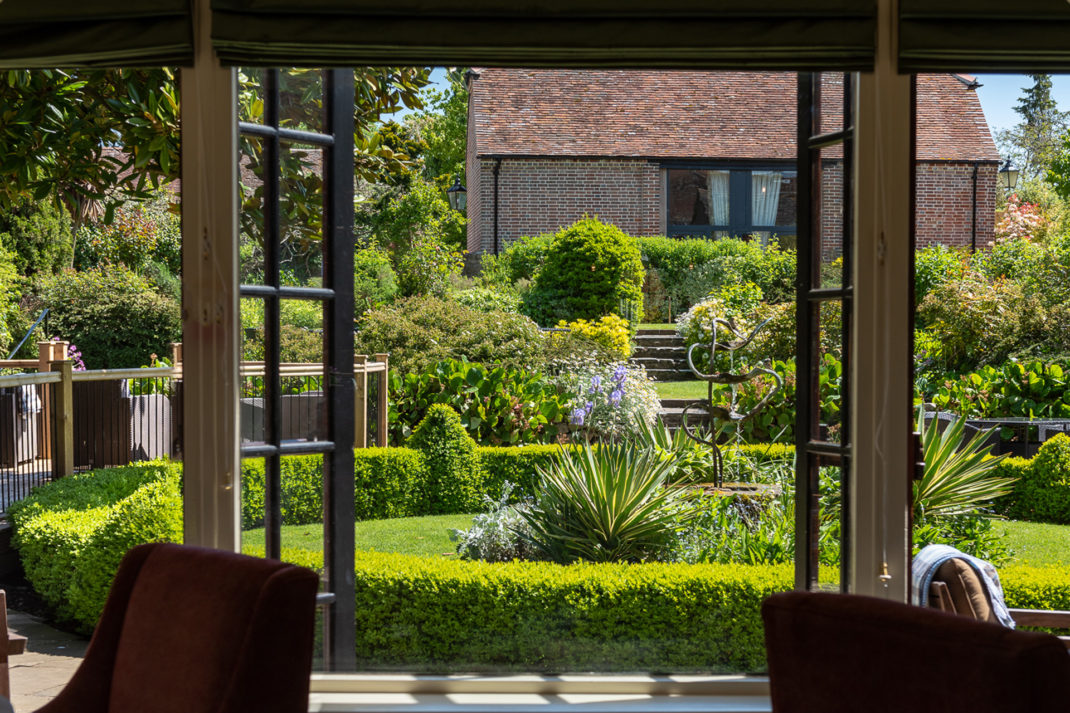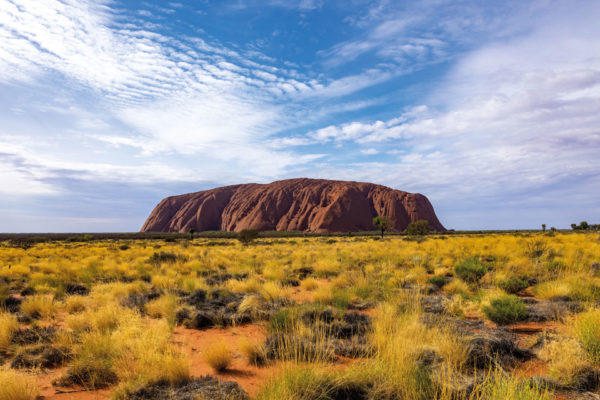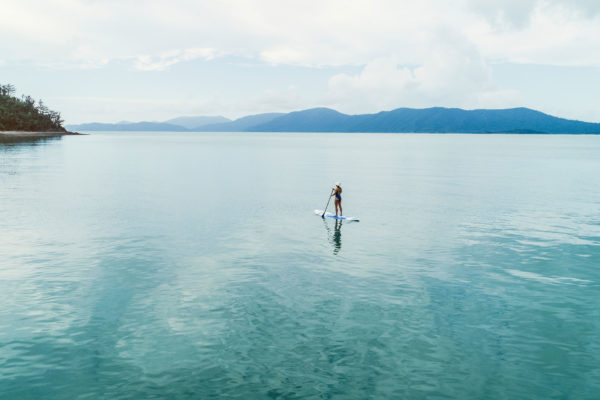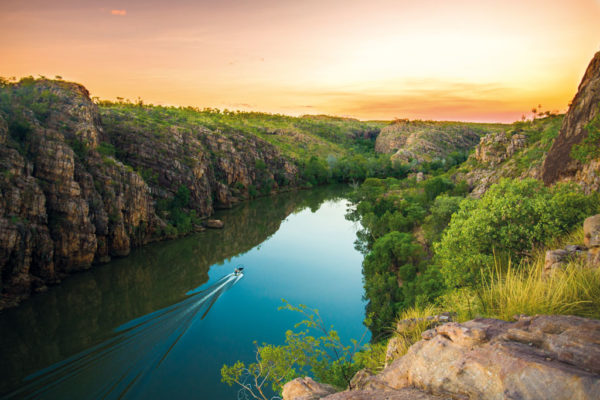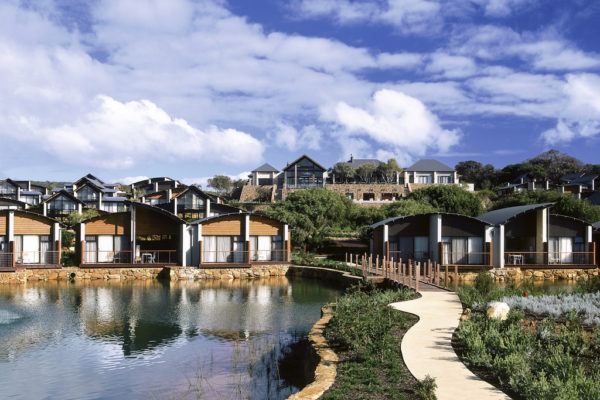Wildness of Oz: Discovering Cairns, in the North East of Australia
By
2 years ago
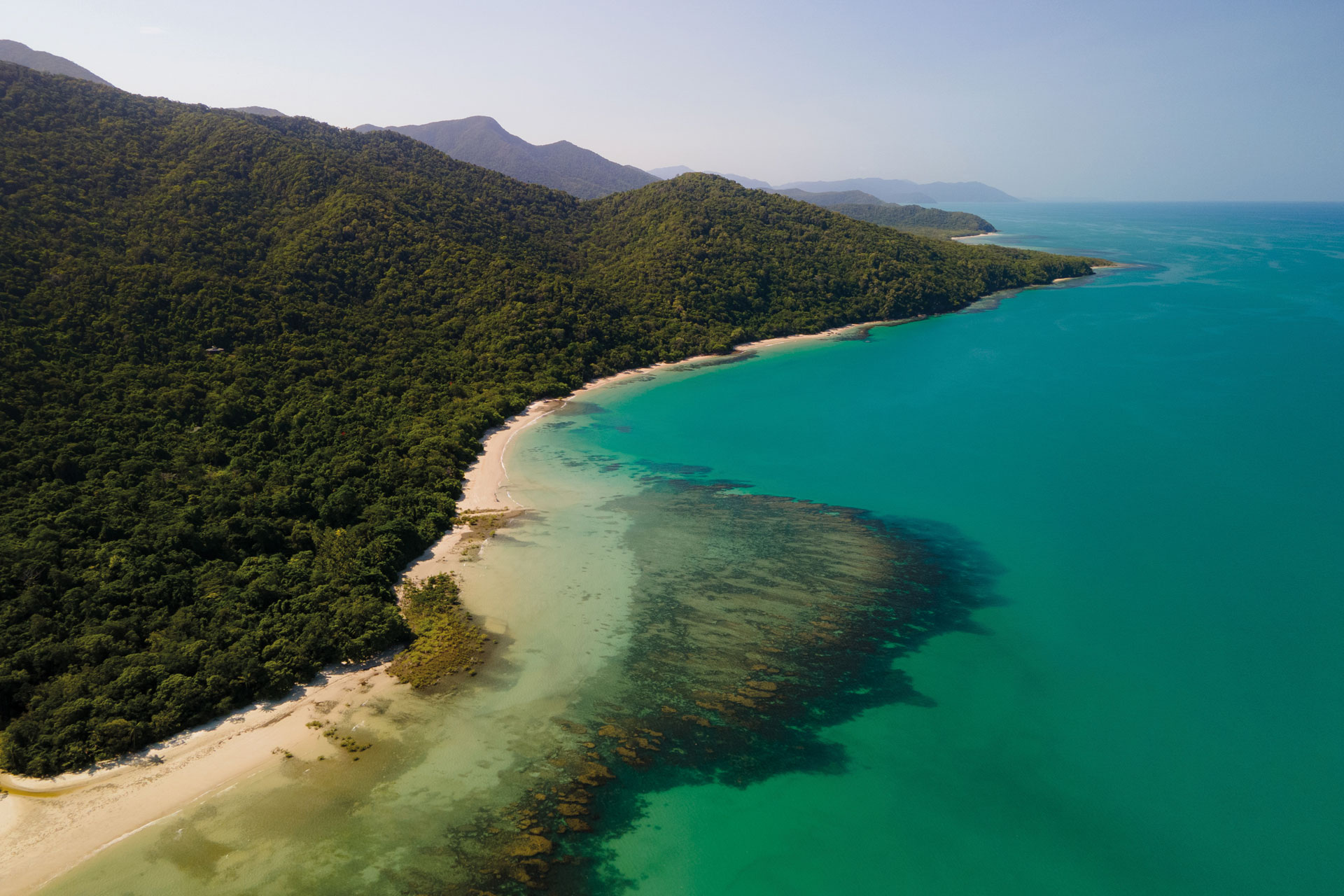
Lauren Ho discovers rock, rainforest and reef in the north-eastern corner of Australia. Read on for the C&TH travel guide to Cairns, in North East Australia.
Travel Guide: Cairns, North East Australia
It’s steamy in Cairns. At 8am – the temperature already well into the mid 30s – our plane has just touched down and a suffocating blast of hot air immediately fogs up our sunglasses as we descend the air stairs onto the scorching tarmac. It’s a tremendous change from the cool, fresh weather in South Australia where I had just spent the past few days wandering around the wineries and the rolling hills of the Barossa Valley.

Cairns is considered the gateway city to the Great Barrier Reef
From Cairns, the gateway city to Australia’s Great Barrier Reef in tropical Far North Queensland, it’s a one-hour scenic coastal drive north to Daintree National Park. As we motor along the winding Captain Cook Highway, sandwiched between the blue waters of the Coral Sea and jungle-sheathed emerald green mountains, my driver, Len – who has lived in the region his whole life – chats to me about the area, which is home to an exciting panoply of attractions including the Whitsunday Islands (one of Australia’s loveliest destinations), the 135-million-year-old Daintree Rainforest (the oldest in the world) and, of course, the Great Barrier Reef. Historically undeveloped, this region, Len tells me, has 36 national parks and sits to the north of Queensland which, with an area of 1,727,000 sq/km, is Australia’s second largest state and is seven times the size of Great Britain.
This gives you an idea of Australia’s sheer expanse. The sixth largest country after Russia, Canada, China, the USA and Brazil, it can take you almost five-hours to fly from the east of the country to the west. And with a number of must-visit hotspots – from the Sydney Opera House to the picturesque Great Ocean Road in Melbourne – scattered all over the mainland, navigating this island (the world’s biggest) can take some planning – especially when on limited time. Of course, flying or driving between the country’s major cities – which mostly lie along the eastern coast – is a no brainer, as is visiting the many wine regions that lie further inland in states like New South Wales, Victoria and South Australia. And then you have Uluru, Australia’s sandstone monolith that has not one but two UNESCO World Heritage listings to its name, as well as a strong significance to the local Anangu people, who have lived within the region for thousands of years. Combined with visiting Cairns, and a trip to Far North Queensland, this makes for a perfect nature-oriented itinerary of rock, rainforest and reef.
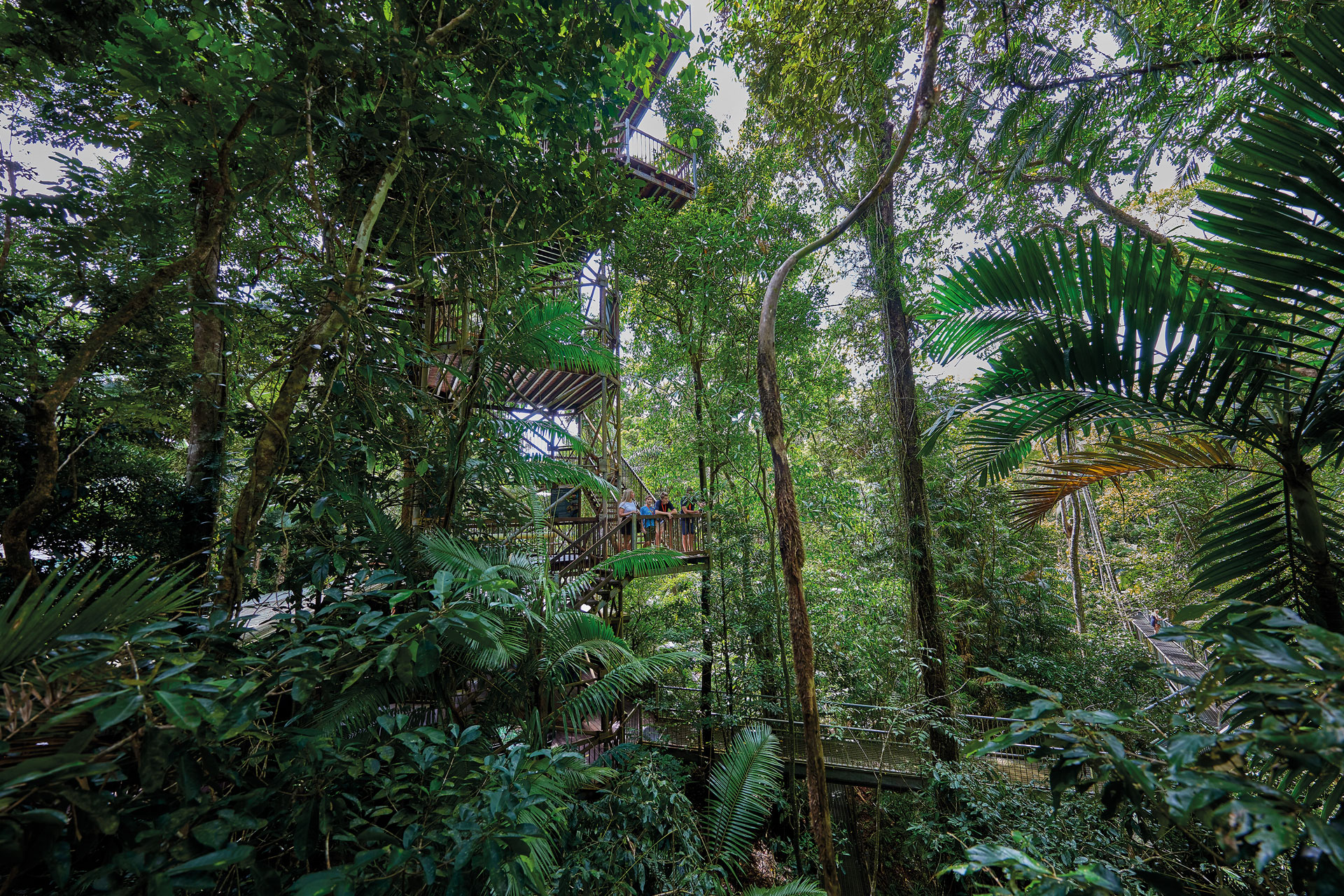
The Daintree Rainforest is located just outside the city of Cairns
And so, back on the Captain Cook Highway, we pass Port Douglas, a relaxed seaside village, before heading slightly inland to Silky Oaks Lodge (silkyoakslodge.com.au). Recently having emerged from a major refurbishment, the retreat sits on the banks of the gently babbling Mossman River, which has carved a path amid the moist, dense canopy of the Daintree Rainforest. The 40 treehouse-style suites are fashioned from local timber, each with specially commissioned local artwork, floor-to-ceiling windows that frame the emerald greenery outside, outdoor bathtubs and balconies with gently swinging hammocks. It’s here where I while away a morning, the air slick on my skin, against the high-pitched soundtrack of buzzing cicadas.
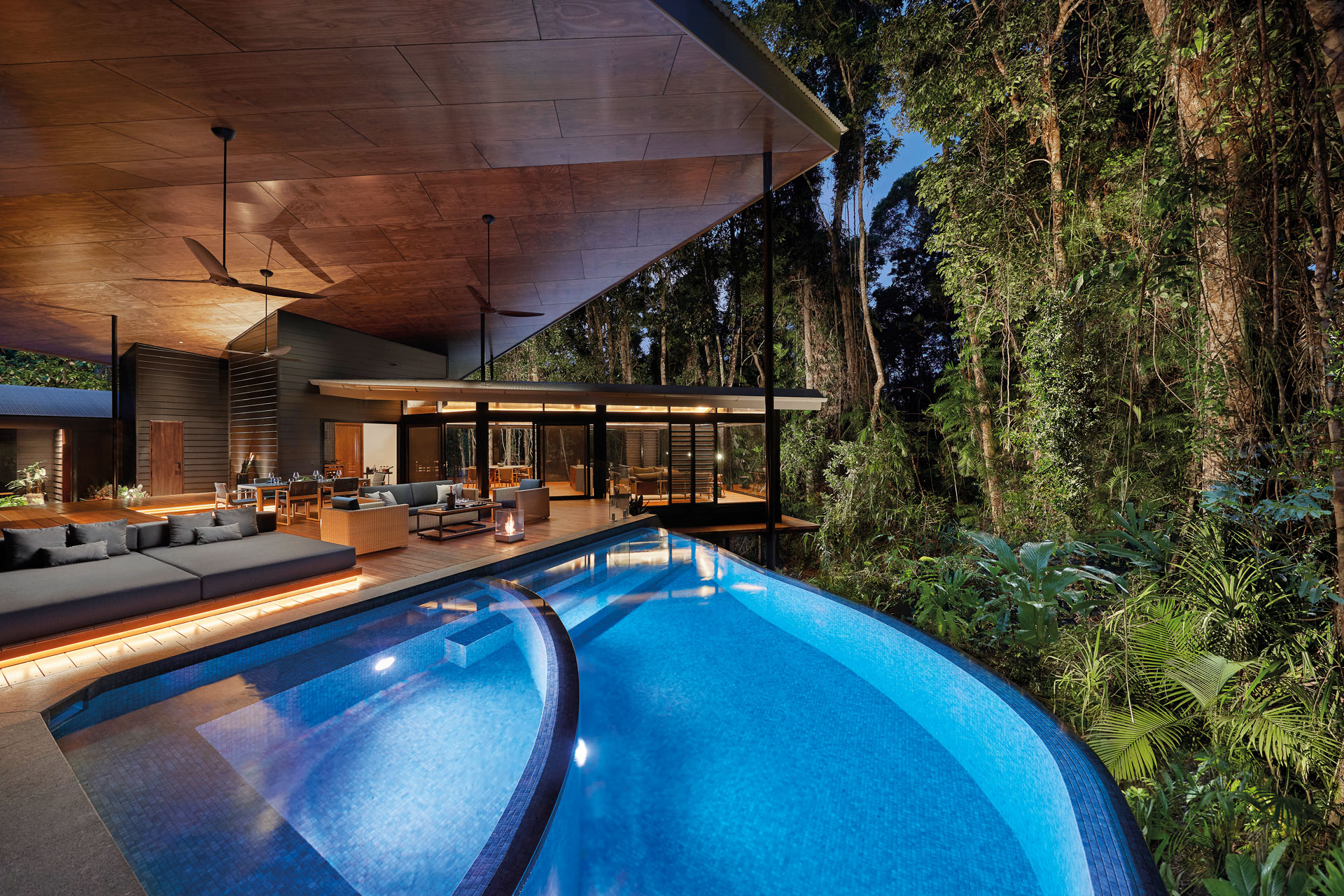
Silky Oaks Lodge is a retreat in the Rainforest
Later that day I meet up with Juan Walker, an Indigenous Kuku Yalanji person who teaches me about the history of his people in the area, their customs and past way of life. At the same time, we explore the string of beaches and rainforest, all of which are filled with flora and fauna traditionally used to treat everything from sunburn and sprains to even drawing the fatal venom from a stonefish. After a brief stop at Mossman Gorge – a 56,000-hectare area within the Daintree National Park where vibrant blue butterflies flit above crystal-clear waters that tumble over a scattering of ancient granite boulders into a rock pool filled with frolicking locals and visitors – we make our way through the jungle to a clearing on the banks of the Mossman River. Here, we bundle up in wetsuits for a snorkelling session in the (crocodile-free) crystal-clear waters, where we spot drifting freshwater turtles and, below the surface, under the rocks and tangle of roots, fish such as barramundi and mangrove jack.
My last day was the loveliest. In Port Douglas, under bright blue skies, I boarded a catamaran and headed north east towards the Low Isles, a four-acre coral cay punctuated by a 144-year-old lighthouse surrounded by 55 acres of reef. On arrival, we were received by a cacophony of nesting marine birds, flying to and fro, their high-pitched chatter harmonising with the lapping of the waves on the beach. After a morning spent snorkelling, watching an array of colourful fish, sea turtles, nurse sharks and parrot fish dart in and out of the gently swaying coral, we head back on board for lunch and a gentle afternoon under the sun. Bar a couple of other day boats, the horizon was silent, the sea peppered with marine life, the gentle bobbing of our catamaran breaking the stillness of the water around us. We were only a short 15km from the buzz of Port Douglas, but it felt a world away. Under the fading light, we headed back to the mainland, the engines silent, the wind propelling us quietly forward in a hushed corner of beautiful Australia.
Lauren was a guest of Tourism Australia and Cathay Pacific. For more information, visit australia.com; walkaboutadventures.com.au; cathaypacific.com; backcountrybliss.com.au.

